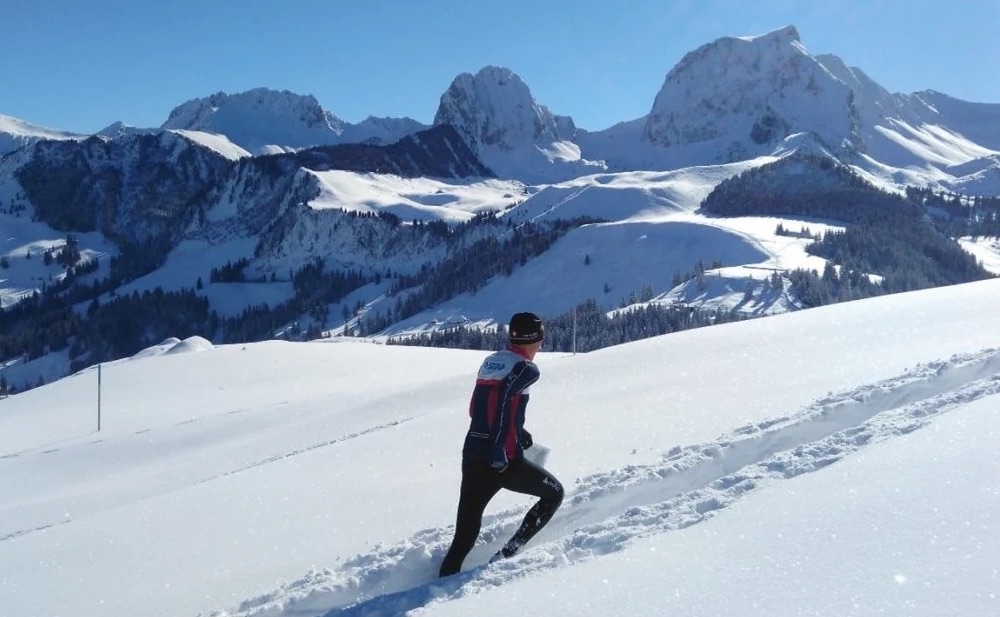Running during winter in the snow can be challenging, but also a great way to enjoy the beauty of nature and keep fit. It is important to prepare well and have the right equipment to run safely and comfortably. In this article we will look at tips and tricks on how to run successfully on snow and ice.
1. Start slowly
You literally have to get used to running in the snow. At the beginning, plan only short and easy sessions and don’t do a marathon long jog on packed snow, otherwise sore muscles (especially in the ankles) are guaranteed.
2. Adapt your running technique
From a tactile point of view, running in soft snow stresses the muscles in a completely different way than running on asphalt. The foot sinks into the snow, solid footing is required to avoid slipping. This means that the contact time with the ground is significantly longer than on firm ground. The running speed has to be slowed down and the arms have to be spread a little bit to be able to balance better. Due to the longer ground contact time, the whole body has to be stabilized over a longer period of time, which increases the muscular demands. Also a consequence of the instability: slower pace and smaller steps. Tip: Nordic running, i.e. running with poles, is a very profitable alternative in winter. The use of poles can compensate for the instability and at the same time involve the arms.
3. Experience first
A run in the snow should be considered first and foremost from the point of view of experience, variation, and the development of fitness. Units with specific specifications such as distance, pace and content such as intervals, tempo runs or running technique should not be performed on snow. If you are preparing for a spring marathon, it is better to run the marathon-specific units on a – snow-free – road. Ambitious runners are recommended to train about 70% on hard surface even in winter.
4. Beware of over training
If the snow surface is uneven over a long period of time, do not run too often and exclusively on snow, otherwise overtraining symptoms and complaints will quickly develop (adductors, hamstrings, plantar tendon, calf muscles, Achilles tendon). Many ambitious runners injure themselves in winter on snowy and icy surfaces. Beware also of missteps and slips. Therefore, plan the important sessions on flat and snow-free ground or indoor on the treadmill.
5. Snow makes you slow
Running-specific muscles need the hard impact to develop their so-called contractile elements, which are needed to run fast with a short ground contact time and also for quite long runs. In other words: If an ambitious runner trains too often or even exclusively on soft ground (regardless of whether it is snow or on soft trails), he or she will be inefficient in terms of pure running performance. He or she will be conditionally stronger, but from a running specific point of view he or she will be slower rather than faster.
6. Appropriate shoe choice
If you run a lot on snow, you should think about your footwear. Of course, the condition of the snow plays a role. Running on a groomed trail is different from running in fresh snow. An important prerequisite for a safe step on snow is a shoe that is as direct as possible, with a flat sole and little arch (heel over the toes), good tread and even spikes if necessary. The shoe should also have good heel grip and a robust upper material. Specific trail shoes are usually also well suited for running in the snow.
This Blog Article was made available to us by Fit for Life. Fit for Life is the Swiss magazine for fitness, running and endurance sports. Would you like to read such articles regularly? Then Click here.

